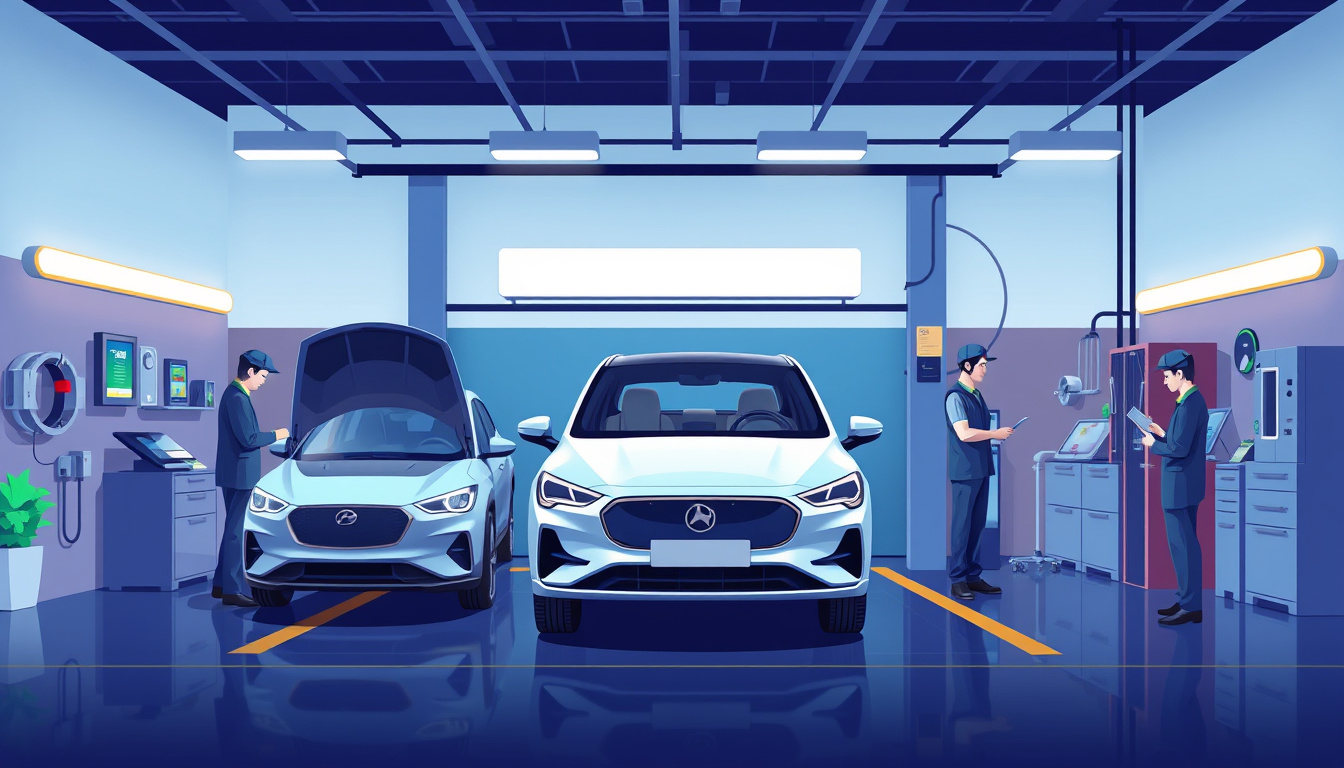As electric vehicles (EVs) continue to gain traction in the automotive market, the maintenance services associated with them have also evolved significantly. With their rise, understanding the unique challenges and solutions in electric vehicle maintenance is crucial for vehicle owners, dealers, and service technicians alike. This article delves into the current state of electric vehicle maintenance services, highlighting key aspects that reflect the improvements and advancements in this sector.
The Shift in Maintenance Paradigms
Maintaining an electric vehicle differs substantially from maintaining a traditional internal combustion engine (ICE) vehicle. Electric vehicles are designed with fewer moving parts and rely on advanced technology, reducing the complexity of maintenance. Key factors that underline these changes include:
1. Reduced Maintenance Needs
Compared to conventional vehicles, EVs typically require less routine maintenance. For instance, electric vehicles do not need oil changes, and their brake systems last longer due to regenerative braking technology, which helps recharge the battery. This results in fewer replacements for brake pads and extends the overall service intervals. Estimates suggest that all-electric vehicles need considerably less maintenance than their ICE counterparts, impacting costs positively for vehicle owners (Alternative Fuels Data Center).
2. Battery Maintenance and Replacement Challenges
While maintenance is less frequent, battery care remains a crucial aspect of EV ownership. Batteries have limited cycle lives and typically require costly replacements after many years of use. Most manufacturers offer warranties of around eight years or 100,000 miles, but outside these guarantees, replacement costs can be significant. Thus, efficient battery management is critical for EV maintenance services (Electric Vehicle Maintenance Best Practices).

Adapting Service Processes
As EVs become more prevalent, auto service centers must adapt their maintenance processes. The transition involves changes across several dimensions:
1. Training and Safety Protocols
Technicians require specialized knowledge to handle high-voltage systems safely. Training programs are essential to equip them with the skills necessary for electric vehicle maintenance, including identifying high-voltage components, understanding battery management, and employing safe working practices. New regulations also mandate that a portion of federal funding goes toward workforce training in zero-emission vehicle technology (Electric Vehicle Maintenance).
2. Service Infrastructure Upgrades
Dealers are increasingly investing in their service infrastructures, installing specialized equipment, and creating safe working environments to accommodate EV maintenance. These enhancements include dedicated service bays with necessary safety equipment to minimize risks associated with high-voltage repairs and ensuring adequate charging capacity within service areas (Prepare for Impact: E-Mobility in the Aftersales Market).
3. Integration of Digital Technologies
With technological advancements, many electric vehicles now benefit from built-in connectivity features allowing for online software updates. This capability enhances vehicle performance and safety, providing users with improved range and efficiency. Dealers and service providers need to be equipped to handle these systems, ensuring that both routine and software maintenance can occur seamlessly (Prepare for Impact).
Customer Experience in EV Maintenance
Maintaining customer satisfaction is paramount in the evolving landscape of electric vehicle maintenance services. As dealerships adapt their service offerings, they must also consider how to best support EV owners during maintenance procedures:
1. Communication is Key
As the dynamics of electric vehicle ownership evolve, dealerships must establish strong communication channels to inform customers about potential issues, such as reduced range in colder weather or impacts of using additional electronic features. Educating customers about these considerations enhances their ownership experience and satisfaction (MSXI).
2. Continuity of Service
Unlike traditional vehicles, problems with an EV often necessitate a trip back to a dealership for repairs that are sometimes beyond the scope of standard roadside assistance. Offering courtesy vehicles of similar make and model, ensuring availability of EV loaners, and providing efficient service turnaround becomes critical to retain customer loyalty and trust (Prepare for Impact).
Conclusion
The improvement in electric vehicle maintenance services is a testament to the automotive industry’s shift towards sustainable technology. As EV adoption continues to rise, ongoing adaptation in service processes, technician training, and customer engagement strategies will be crucial in meeting the demands of this changing market. By embracing these advancements, electric vehicle maintenance can become more efficient and user-friendly, paving the way for a greener transportation future.
——————————————————
Voltsandvolts.com is a blog dedicated to electric vehicles (EVs). Our blog features articles on EV reviews, stories, tips, tricks, charging infrastructure, and battery technology. Join the conversation and become part of the Voltsandvolts.com community today!
